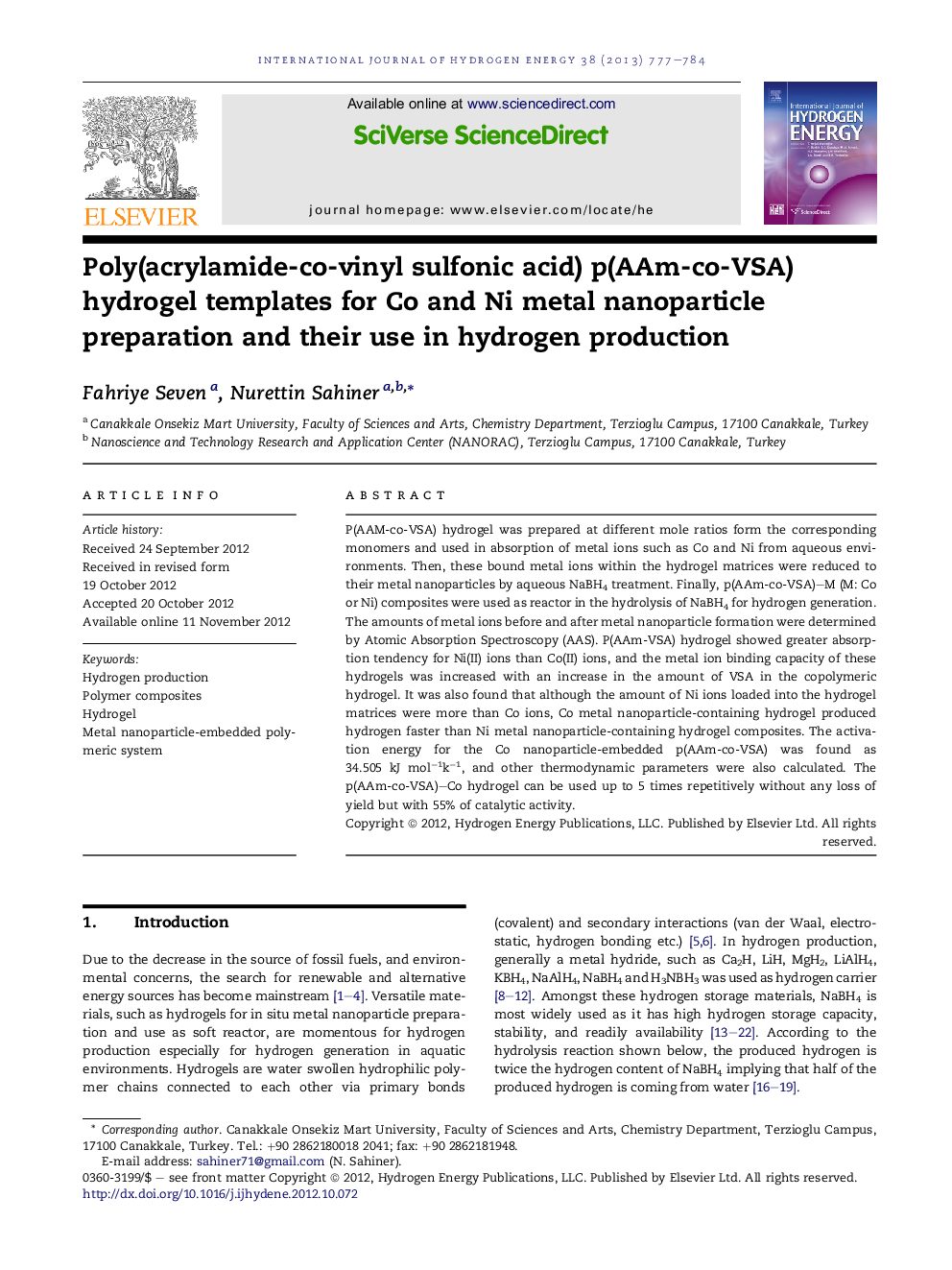| Article ID | Journal | Published Year | Pages | File Type |
|---|---|---|---|---|
| 1282043 | International Journal of Hydrogen Energy | 2013 | 8 Pages |
P(AAM-co-VSA) hydrogel was prepared at different mole ratios form the corresponding monomers and used in absorption of metal ions such as Co and Ni from aqueous environments. Then, these bound metal ions within the hydrogel matrices were reduced to their metal nanoparticles by aqueous NaBH4 treatment. Finally, p(AAm-co-VSA)–M (M: Co or Ni) composites were used as reactor in the hydrolysis of NaBH4 for hydrogen generation. The amounts of metal ions before and after metal nanoparticle formation were determined by Atomic Absorption Spectroscopy (AAS). P(AAm-VSA) hydrogel showed greater absorption tendency for Ni(II) ions than Co(II) ions, and the metal ion binding capacity of these hydrogels was increased with an increase in the amount of VSA in the copolymeric hydrogel. It was also found that although the amount of Ni ions loaded into the hydrogel matrices were more than Co ions, Co metal nanoparticle-containing hydrogel produced hydrogen faster than Ni metal nanoparticle-containing hydrogel composites. The activation energy for the Co nanoparticle-embedded p(AAm-co-VSA) was found as 34.505 kJ mol−1k−1, and other thermodynamic parameters were also calculated. The p(AAm-co-VSA)–Co hydrogel can be used up to 5 times repetitively without any loss of yield but with 55% of catalytic activity.
Graphical abstractFigure optionsDownload full-size imageDownload as PowerPoint slideHighlights► Copolymeric hydrogel for multi use. ► Advanced functional hydrogel metal nanocatalyst systems. ► Hydrogen production via hydrogel composite. ► Soft hyrdrogel reactors for energy applications.
